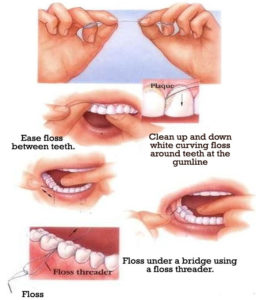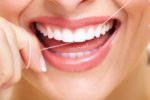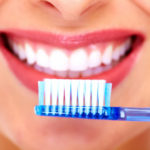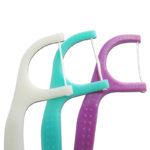Have you been wondering lately on how to use dental floss properly?
In maintaining impeccable oral hygiene, dental floss should we be used and just as important as brushing your teeth. Even with the thinnest brush fibers, the toothbrush fibers fail to reach all surfaces of the teeth and areas where plaque can be accumulated.This is why it is important to always floss your teeth well and regularly.
Interdental spaces, and in particular the contact points between the teeth, are the places where dental floss will be most helpful. However, you should learn how to use dental floss to avoid damaging your gums.
Read more at our best dental floss review for some great flossing choices.
Today, on the market there are many types of dental floss: waxed, unwaxed, fluoridized, in the form of flat strips or thin fiber, a special superfloss dental floss, and some others. The best dental floss for you is the one that is most easily handled. Perhaps it is best to start off with dental floss marked “sensitive”, because these flosses are softer and more pliable on the gums in the event of accidental stronger contact.

Start by taking at least 20” (50 cm) of dental floss and wrap a part of it several times around the right index finger, and the second part around the left index finger. Move your thumbs towards dental floss and tighten it so that the thumbs are separated about ½” (1 cm). Use that part of the dental floss to pass between the teeth.
The smaller the gap between the thumbs is, you have more control and can move the dental floss more easily on the sides of the teeth. If the spaces between the teeth are very narrow, try back and forth dental floss movements. Repeat the same process between each tooth, using a new part of the dental floss which you unfold with your index finger.
On the lower jaw, and between the upper molars, the easiest will be if you use only index fingers to unwind the dental floss. The rule about using a smaller gap between the index fingers for greater control remains valid. After flossing, your teeth should be rinsed with water or with mouthwash.
What if some spaces between the teeth bleed?
It does not mean that this is the area you need to avoid, on the contrary – it has to be cleaned more thoroughly. Usually, it is a place where there has been a stronger accumulation of plaque that caused inflammation. If, even after a few days of flossing, the bleeding has not decreased or stopped, you should visit your dentist.
What if the dental floss gets stuck between the teeth and breaks?
Probably it is a case of some dilapidated filling, caries or tartar. Since dental floss is getting stuck there, that means that food is stuck there also, and that makes this place very suitable for the formation of cavities. In this case you should also visit the dentist to determine what exactly the problem is.
How often should use dental floss?
Ideally, once, every day. Those few extra minutes a day to take care of your oral hygiene means a lot for the health of your teeth. Once you master the technique of using the dental floss, you will need only 2-3 minutes for a thorough cleaning of the teeth.
If you have in your mouth prosthetic devices such as, bridge, dental floss is of great help to you in cleaning the space under the bridge. It would be best to use a special kind of dental floss that is intended for such use – superfloss. One end of the dental floss is thickened and thus facilitates easier access under the bridge, and the central part is especially soft and wide to enable you to clean the space below the bridge.
The same dental floss can be used in and around dental implants and orthodontic brackets. If you prefer, you might want to put a little toothpaste or mouthwash you typically use. The dental floss is an irreplaceable tool for oral hygiene and it would be good if the kids were also familiar with dental floss and learned its proper use and maintenance to achieve impeccable oral hygiene from the early age.





